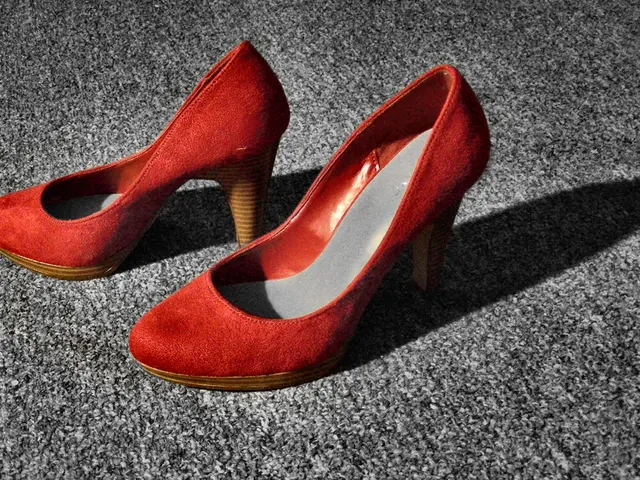Innovations Sparked by Animal-Inspired Ideas: A Look at Ingenious Creations Driven by Animal Models
Have you ever found yourself amazed by a bird's ability to fly or a spider's intricate web? Well, genius scientists and engineers have been, too. They've harnessed the power of nature's incredible designs to create some amazing inventions, and we're here to show you how.
Bio-what now?
Biomimicry is the idea of copying nature's blueprints to create human solutions. What could be better than working closely with Mother Nature herself to design revolutionary technologies? With millions of years of evolution under her belt, nature's already solved many of the problems we're facing. Biomimicry lets us skip the trial-and-error process and learn directly from the survival strategies of the animal kingdom.
Why the heck should we care?
By examining and emulating nature's designs, we can achieve more sustainable, innovative, and smart solutions in fields like technology, architecture, medicine, and business. Here are some inspiring examples of nature-inspired tech.
Velcro: Nature's Perky Partner
Swiss engineer George de Mestral discovered Velcro while out for a walk with his dog. He noticed that burrs from the burdock plant clung stubbornly to his clothing and Fido's fur. Upon closer inspection, he found that the burrs had tiny hooks that easily latched onto fabric with loops (like the backs of their little coats). This brilliant mechanism created the super handy and versatile synthetic hook-and-loop fastener we know as Velcro.
Buzzing About Drones
Drones have become incredibly popular for delivering packages, capturing stunning aerial footage, and surveying crops. But their flight capabilities were limited until engineers started paying attention to our buzzing buddies, bees. Bees are masters of flight, able to hover, fly in tight formations, and move quickly. By studying the aerodynamics of bees and other insects, engineers have improved drone stability, control, and maneuverability. Drones can now swarm and operate autonomously, revolutionizing various fields.
Train CHUGG-ing Along
Japan's Shinkansen bullet trains are legendary for their speed. But when they exited tunnels, they created massive sound waves, leading to noisy sonic booms. Tokyo-based engineer Eiji Nakatsu was inspired by the streamlined beak of the kingfisher bird to introduce a shark-fin-like nose cone to the Shinkansen trains. The new design reduced air resistance and noise pollution, allowing trains to travel faster with less fuel consumption.
Pick a Sticky Situation
Remember the pain of sticking to a piece of gum or a Band-Aid in your hair as a kid? That's no longer a problem thanks to gecko-inspired adhesives. Instead of the sticky mess we're all familiar with, these adhesives replicate the gecko's foot structure to stick without damaging surfaces or leaving residue. Perfect for medical devices, construction, and more!
Plenty More Fish in the Sea
Shark skin has inspired the development of materials that resist bacteria and algae growth. These shark-skin-like surfaces are being used on hospital surfaces, ships, and other applications to improve health and hygiene. Talk about nature's antibacterial!
The Power of Nature in Our Hands
Biomimicry isn't just mimicking, it's about understanding the systems, principles, and strategies that have allowed animals and plants to thrive for millions of years. As we face global challenges like climate change and resource depletion, we must look to the natural world for guidance. Let's continue to innovate by learning from nature and working in harmony with the environment.
And there you have it! The natural world has inspired some of the most incredible inventions in history. From a simple burdock plant to the mighty shark, the secrets of nature are truly endless. Stay tuned for more articles on the fascinating intersection of technology and nature!
Join the Journey of Discovery
If you're as intrigued by the power of biomimicry as we are, don't forget to bookmark our website. We'll continue to explore how the natural world influences modern technology and design. From eco-friendly solutions to advancements in robotics, there's always more to learn from nature, and we're just getting started! Let's continue discovering together!
References
- Biomimicry Institute
- George de Mestral Biography
- Shinkansen Bullet Train History
- Biomimicry and Technology
- Biologically Inspired Robotics
- Shark Skin-Inspired Material
- In future businesses, we may see technologies inspired by the streamlined beak of kingfishers, improving the efficiency and sustainability of transportation.
- The fashion industry could take cues from the versatile adhesive properties of geckos, developing new fabric technologies that stick without causing damage or leaving residue.
- Researchers in the field of science might examine the complex web-building techniques of spiders to create more effective networks in the study of climate change and environmental data.
- In the realm of travel, drones may adopt the swarming behavior of bees, revolutionizing aerial photography, delivery services, and wildlife monitoring.
- Engineers working in technology could study the antibacterial properties found in shark skin to create innovations in healthcare, improving hospital hygiene and reducing the risk of infections.




